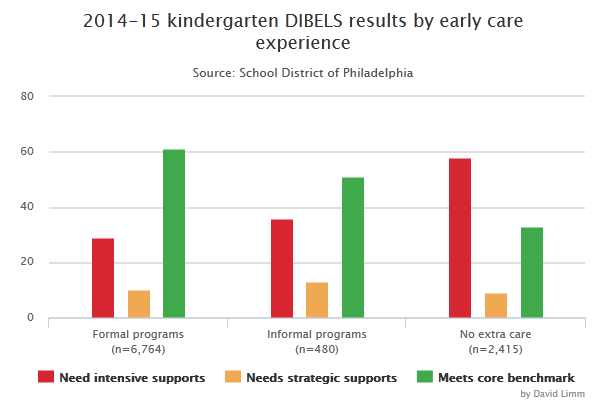Only 40 percent of District 3rd graders score proficient or better in reading.
In 2014, only two in five District 3rd graders met state standards for reading proficiency, based on the PSSA. Statewide, 70 percent of students score proficient.
Citywide data for charter schools were not available.
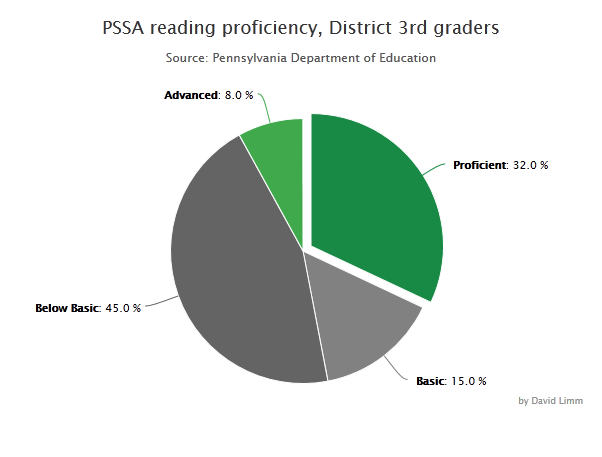
Reading tests show large racial gaps...
In 2014, Black and Latino students showed a 29-point gap in reading proficiency rates compared to White and Asian students. Citywide data for charter schools were not available.
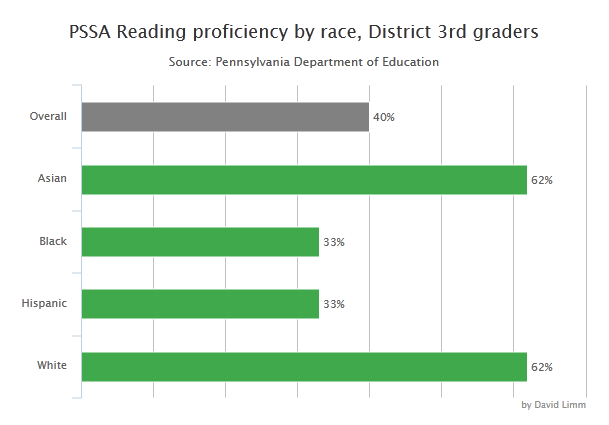
... and other gaps among subgroups
There is a 10-point gap in reading proficiency between boys and girls. Fewer than one in 10 special education 3rd graders were proficient in reading.
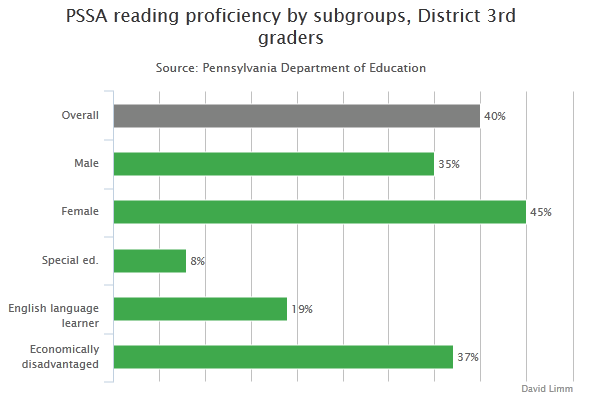
Philadelphia ranks low among big cities in reading proficiency
Philadelphia beats out just four other big cities in its score on the most recent national NAEP test.
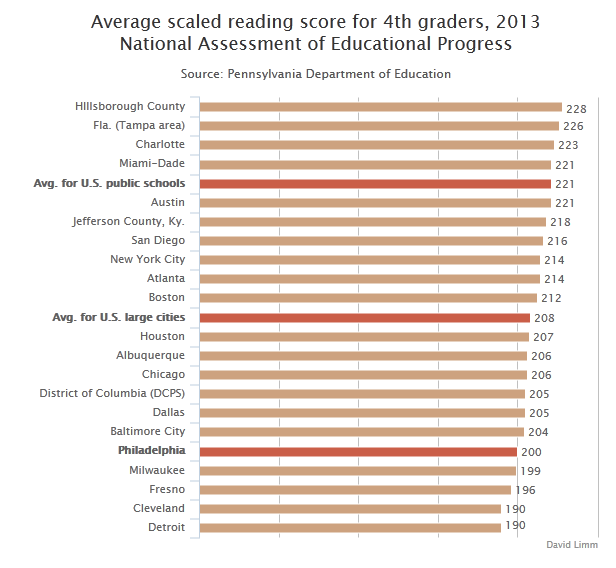
Most schools have a red flag for chronic absenteeism
According to the organization Attendance Works, schools with average daily attendance below 93 percent usually have a problem with chronic absenteeism.
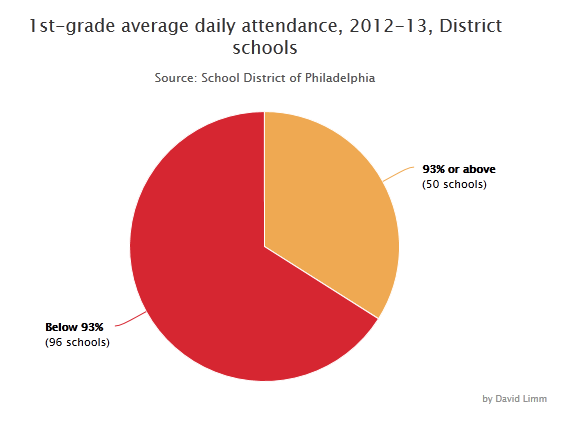
Just one-third of the city’s preschool-age children are in high-quality pre-K
High-quality pre-K includes Head Start, PA Pre-K Counts, public school programs, Keystone Stars 3- and 4-star programs, and certain other other licensed and accredited providers.
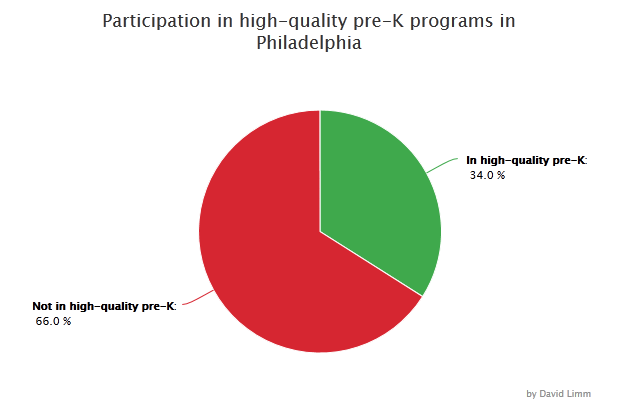
District students with formal pre-K show better scores on kindergarten literacy assessment
Students who attended formal programs or centers for pre-K show better literacy skills overall than those who had informal child care (such as home-based care) or no extra care. The DIBELS are a set of literacy assessments used by the District.
